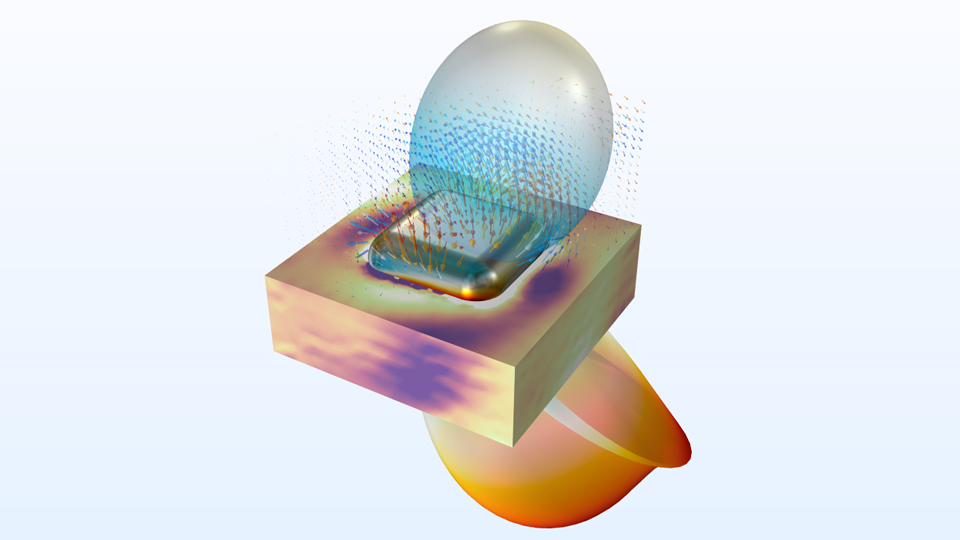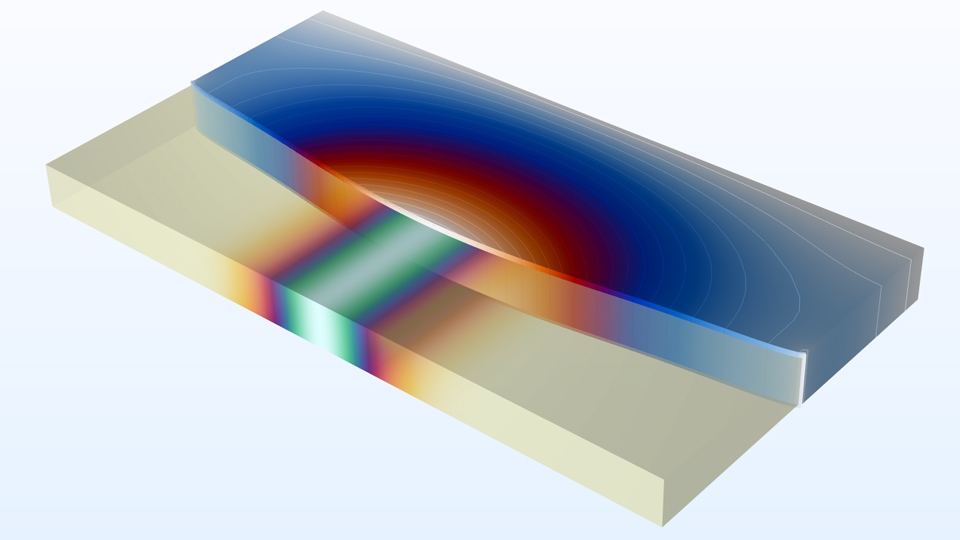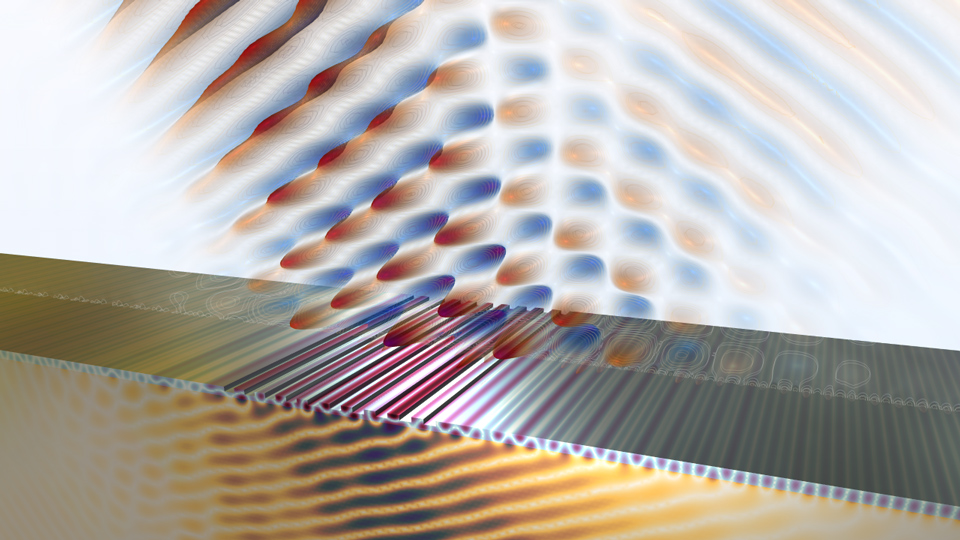Wave Optics Module Updates
For users of the Wave Optics Module, COMSOL Multiphysics® 6.4 introduces far-field calculations in inhomogeneous domains, new variables for coupling between source and destination boundaries, and updated default polarization plots for clearer and faster simulation results. Learn about these updates and more below.
New Feature for Calculating Far Field in the Presence of a Substrate
The new Far-Field Domain, Inhomogeneous feature enables the analysis of far-field radiation in the presence of a substrate. This feature supports far-field computations of structures consisting of a scatterer or source embedded in a homogeneous superstrate (typically air) and a homogeneous dielectric substrate. The Scatterer on Substrate tutorial model demonstrates this new addition.
New Variables for Calculation of Coupling Between Different Source and Destination Boundaries
To simplify the analysis of, for instance, coupling between guided waves and free-space waves (and vice versa), new variables for outcoupling efficiency (i.e., the ratio between the integrated output power and the input power) have been defined. The variables are accumulated hierarchically, making it easy to analyze coupling to both small and large features and boundaries. Similarly, there is a hierarchy of variables to account for the integrated loss due to absorption. Variables for both the power loss and the loss normalized to the input power are available. This functionality is primarily demonstrated in the Modeling a Scatterer Near an Optical Waveguide model but can also be seen in the following tutorial models:
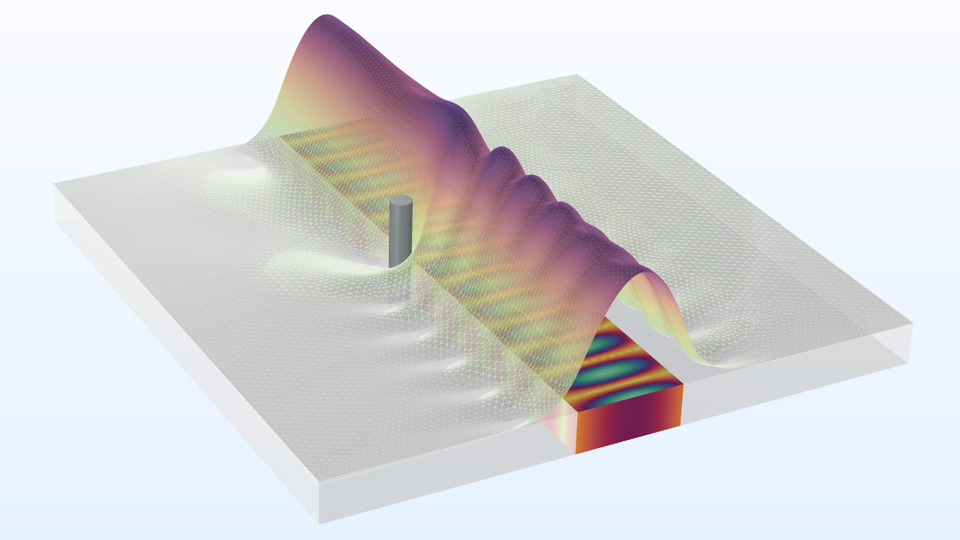
Updated Polarization Plot and Results Improvements
In the Polarization plot, there is a new option for normalizing the polarization ellipses to the largest diffraction efficiency. As a result, the size of the ellipse represents the diffraction efficiency. Furthermore, there are new plot options that indicate the area for propagating diffraction orders. The updated Polarization plot is shown in the Hexagonal Grating (Wave Optics) and Hexagonal Plasmonic Color Filter tutorial models.
The Cross Section Calculation feature now provides multiple options for modeling the scattering, absorption, and extinction cross sections: a default plot or global evaluation, which are demonstrated in the Optical Scattering off a Gold Nanosphere model and the Scatterer on Substrate tutorial models, respectively.
Global Evaluation nodes, such as reflectances, transmittances, and diffraction efficiencies, have been wrapped in Evaluation Group nodes, enabling automatic updates of the table data after repeated simulations. This functionality is demonstrated in the Waveguide S-Bend tutorial model, where reflectance, transmittance, and loss are evaluated.

Optical Material Library Updates
Within the Optical material library, available in the Ray Optics Module and Wave Optics Module, 12 new glasses from Schott AG and 10 new glasses from CDGM Glass have been added. These new glasses contain all the material properties required to perform a structural-thermal-optical performance (STOP) analysis.
New Tutorial Models
COMSOL Multiphysics® version 6.4 brings several new tutorial models to the Wave Optics Module.
Thermal Heating of a Semiconductor Saturable Absorber Mirror (SESAM)
Silicon on Insulator Optical Grating Coupler
Topology Optimization of a Metalens
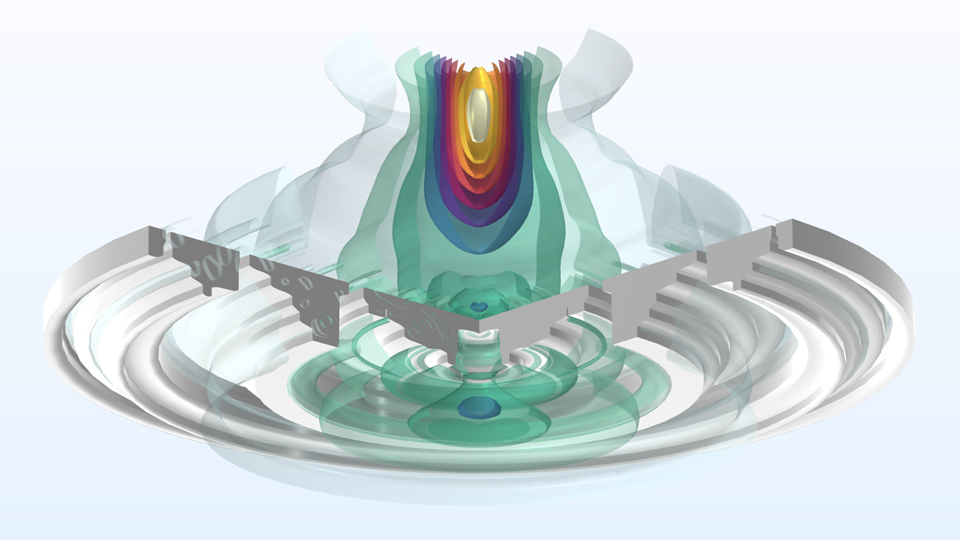
*Requires the Optimization Module
Designing a Metasurface Beam Deflector Using Shape Optimization
This model is based on the Metasurface Beam Deflector tutorial model. The performance is improved using shape optimization, which enables the radii and the position of the individual pillars to change.
metasurface_beam_deflector_optimization
Download from the Application Gallery
*Requires the Optimization Module
Reflection of a Circularly Polarized Plane Wave
The red arrows represent the electric field, and the black arrows represent the power flow. The waves propagating downward are all right-handed circularly polarized, whereas the reflected waves (top arrows) are left-handed circularly polarized.

